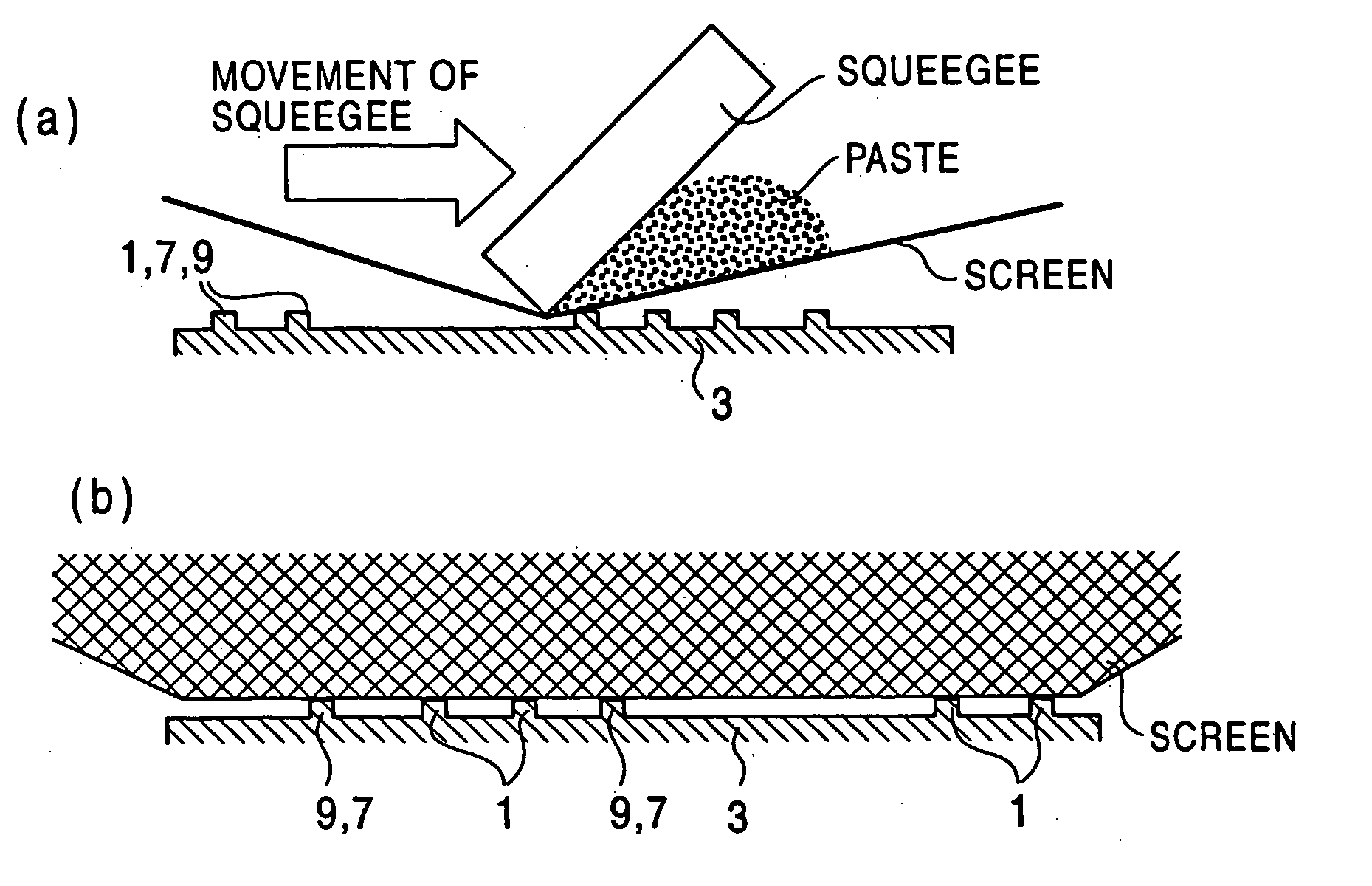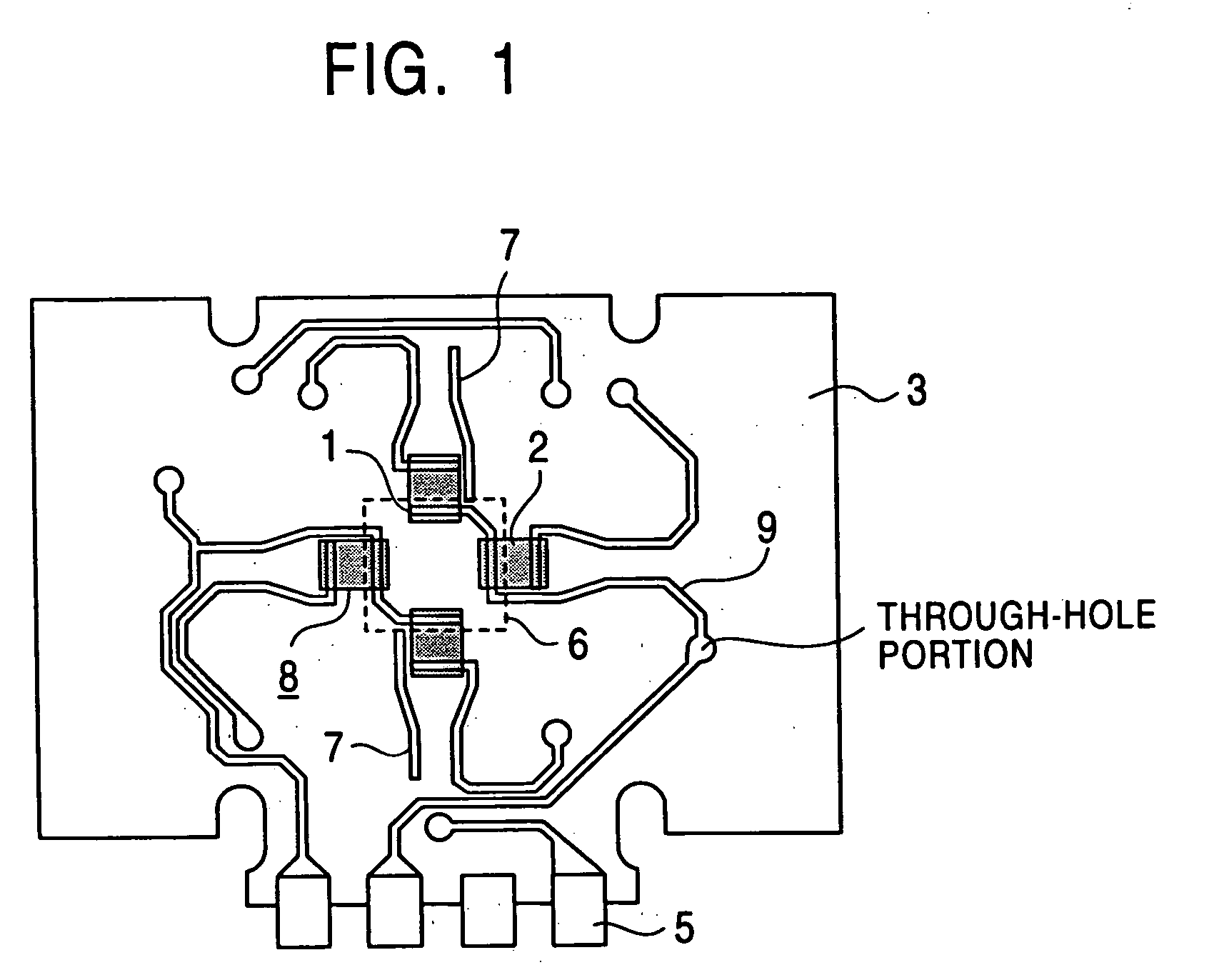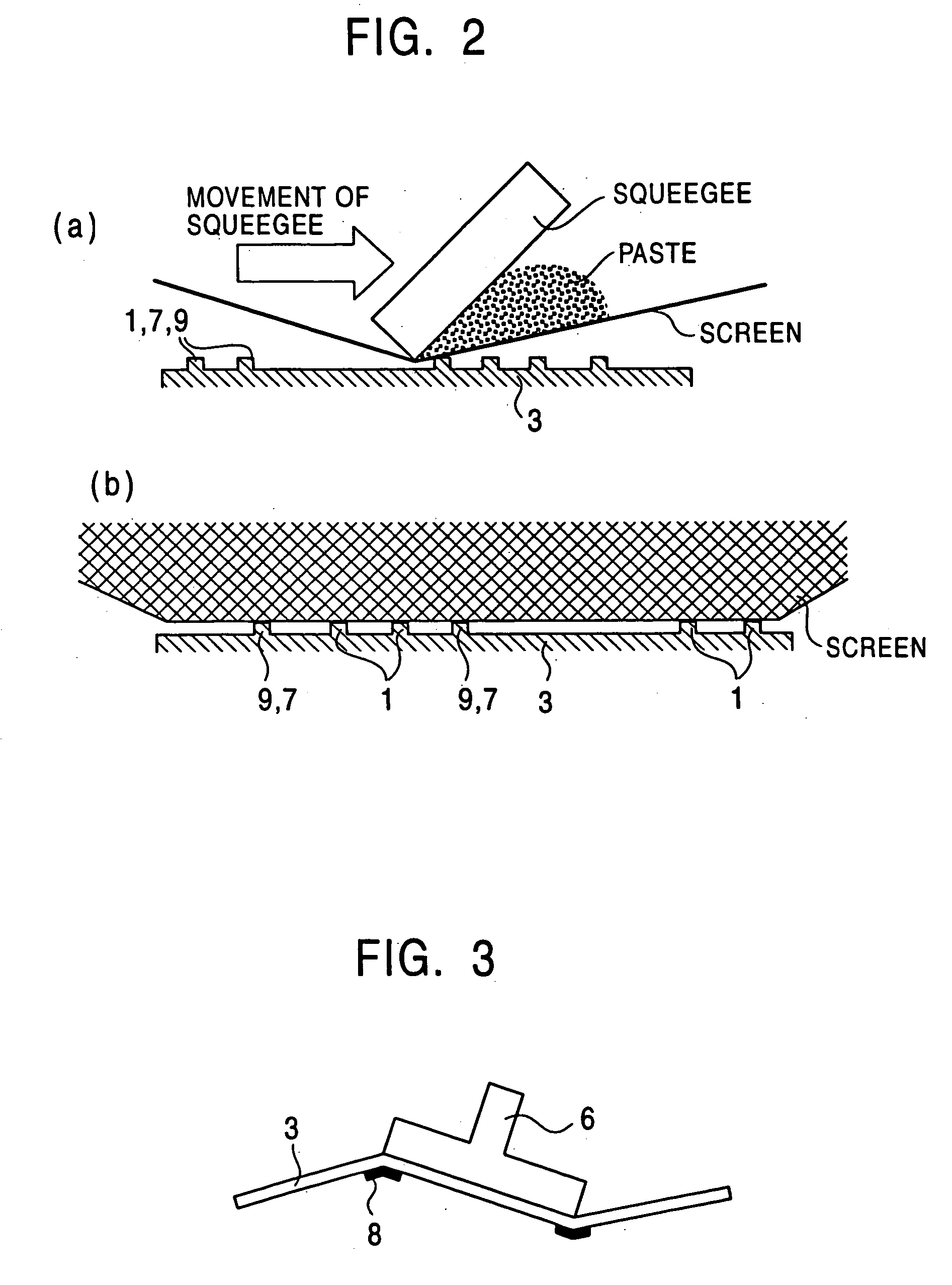Resistor element, stress sensor, and method for manufacturing them
a technology of resistor elements and stress sensors, applied in the direction of instruments, conductive pattern formation, force/torque/work measurement apparatus, etc., can solve problems such as problems, difficulties in the former to form resistors, and different from the conventional technique described above, so as to reduce the variation in the effect of decreasing the resistance of the resistor element 8
- Summary
- Abstract
- Description
- Claims
- Application Information
AI Technical Summary
Benefits of technology
Problems solved by technology
Method used
Image
Examples
Embodiment Construction
[0119] Hereinafter, with reference to figures, an example of embodiments of stress sensors having structures 1a to 1d according to the present invention will be described, the stress sensor having a molded body of a glass fiber filled epoxy resin as a board (1.2 mm thick).
[0120] First, after copper foils 18 μm thick are adhered to both surfaces of an insulating board 3, known etching treatment is performed for the copper foils except for necessary portions thereof, thereby forming conductors 9, resistor-element electrodes (circuit pattern electrodes 1), and board terminal parts 5. A layout of the conductors 9 and resistor-element electrodes on a surface of the insulating board 3 of one stress sensor thus formed is shown in FIG. 1. In this case, the side at which the resistor elements are formed is only shown; however wires made of conductors are also provided on the rear surface of this insulating board 3.
[0121] On the surface of the insulating board 3, the conductors 9 (printing ...
PUM
| Property | Measurement | Unit |
|---|---|---|
| thickness | aaaaa | aaaaa |
| height | aaaaa | aaaaa |
| thickness | aaaaa | aaaaa |
Abstract
Description
Claims
Application Information
 Login to View More
Login to View More - R&D
- Intellectual Property
- Life Sciences
- Materials
- Tech Scout
- Unparalleled Data Quality
- Higher Quality Content
- 60% Fewer Hallucinations
Browse by: Latest US Patents, China's latest patents, Technical Efficacy Thesaurus, Application Domain, Technology Topic, Popular Technical Reports.
© 2025 PatSnap. All rights reserved.Legal|Privacy policy|Modern Slavery Act Transparency Statement|Sitemap|About US| Contact US: help@patsnap.com



